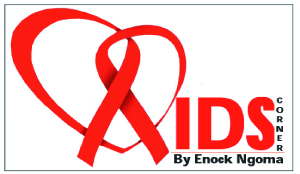 This week and next week, I will reproduce an article sent to me by my colleague Samuel Kumar from Kitwe who is director at Zambia AIDS Research Foundation (ZARF) and an ardent reader of this column. Samuel says:
This week and next week, I will reproduce an article sent to me by my colleague Samuel Kumar from Kitwe who is director at Zambia AIDS Research Foundation (ZARF) and an ardent reader of this column. Samuel says:
Before we talk of a cure, let’s discuss about the five classes of ARVs that are available.
1. NRTI, this class of drug blocks the replication enzyme reverse transcriptase by making faulty nucleotides
2. NNRTI this class of drug blocks the enzyme reverse transcriptase from functioning
3. INTEGRASE INHIBITOR, this class of drug blocks the integration of the viral DNA into the human DNA
4. PROTEASE INHIBITOR, this class of drug blocks the cutting of mRNA to proteins this leads to the budding of immature, non infectious virions
5. ENTRY INHIBITOR, this class of drug blocks the virus from infecting a healthy cell by binding to a cell surface receptor called CCR5, FUSION INHIBITOR blocks the cell entry by binding to a protein called gp41.
However all the five classes of drugs are available only in the western world, Africa has largely been neglected, in Africa the most common drugs are NRTI, NNRTI and sometimes protease inhibitors.
People on therapy for a long time will eventually develop drug resistance and there are no alternate choices of drugs resulting in premature deaths.
It’s important to mention that some of the drugs not common in Africa are also used as salvage therapy.
And people who may have developed transmitted drug resistance do not have access to genotypic tests and as a result they do not have the option to be treated with the right type of drugs.
Usually they could have got the virus resistant to NNRTIs, so a patient placed on treatment using a NNRTI will be on a failing therapy.
Around the world estimates suggest that 10 per cent of people living with HIV have the transmitted resistance.
The onus is on the stakeholders to lobby for the modern ARVs and genotypic testing.
There should be more awareness on this misinformed belief of boosting immune system which needs to be explained.
The cell that controls the immune functioning is the CD4 T helper cell while boosting an immune system means boosting the CD4 T cell, and HIV targets the CD4 cell.
Invariably by boosting an immune system we are actually creating more targets for HIV to attack, so its clever marketers who prey on vulnerable people and trying to make gains out of ignorance.
Our immune system is very complex and it’s not possible to boost it through off the shelf products.
A person living with the virus has the immune system that is already boosted because of the ongoing replication, so how do you boost a system that is already hyperactive?
People who have been cured of AIDS
1) The first man cured of AIDS through bone marrow transplant CCR5 homozygous (Sterilising cure)
2) The Mississippi baby (Functionally cured)
3) Two Boston men underwent bone marrow stem cell transplant CCR5 heterozygous and were cured (Functionally cured)
4) 14 men who started early therapy (Functionally cured)
5) Treatment with cancer treatment drug Histone Deacetylase (HDAC ) inhibitor, (HDAC is a human enzyme that blocks the activation of infected cells), Vorinostat, could purge HIV and continued treatment with ART could lower viral load
6) Gene therapy/Zinc finger technology, Sanger method, that can make CCR5 non-functional (zinc finger is like a genetic scissor)
Briefly, let’s explain all the five cures that have been achieved.
1. In order for HIV to enter a healthy cell (CD4 T cell or a macrophage) it needs two receptors, it has to touch CD4 molecule present on the cell, and also a receptor called CCR5, The berlin patient, received a bone marrow transplant from a donor who lacked the CCR 5 gene critical for HIV entry.
The Berlin patient received chemotherapy and body radiation – this kills cancer cells and lowers a person’s immune system thus preventing graft rejection, and over a period of time his immune cells were replaced with the cells of the donor, the old cells were mopped out. This procedure has a fatality rate of 20 percent and expensive, however it has shown a proof of concept.
2. Typically, newborns with infected mothers are placed on preventative treatment in the first several hours of birth to try to prevent the virus from taking hold. If that prophylaxis fails, they are then switched to a three-drug treatment regimen.
Because the Mississippi baby wasn’t able to get the preventative at the rural hospital where she was born and was already showing signs of the virus at 30 hours of age, she was given the standard three-drug cocktail sooner than other children. (To be continued next week)
For comments write to knoxngoma@gmail.com or SMS/call +260955883143






